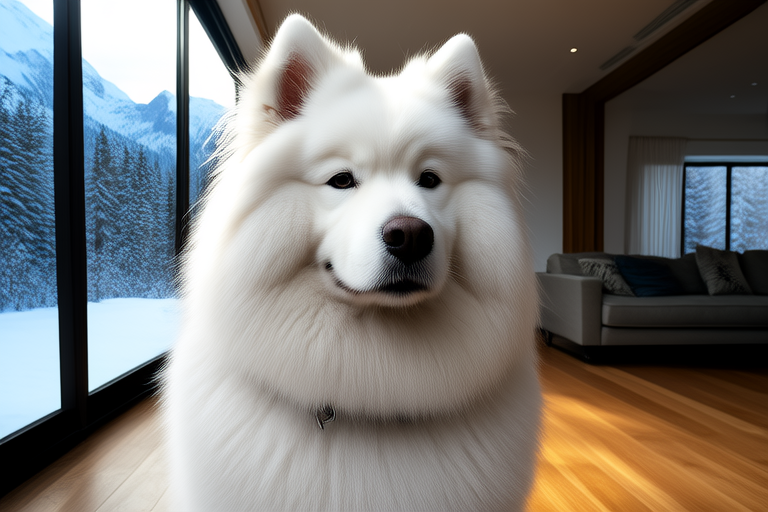From Tundra to Couch: The Complete Guide to Living with a Samoyed
Introduction
Welcome to the world of Samoyeds! These fluffy, friendly dogs have captured the hearts of many pet lovers around the globe. Originating from the harsh tundras of Siberia, Samoyeds have adapted to thrive in some of the coldest environments on Earth. This comprehensive guide will walk you through everything you need to know about living with a Samoyed, from understanding their history to ensuring they live a healthy and happy life.
The Samoyed’s History and Origin in the Tundra
The Samoyed breed has a rich history that dates back centuries. Native to the northern regions of Siberia, these dogs were originally bred by the nomadic Samoyedic people. They were used primarily for herding reindeer, pulling sleds, and providing warmth to their human companions during cold nights. Their thick, double coats made them well-suited for the frigid temperatures, and their gentle nature allowed them to form close bonds with humans and other animals.
Samoyeds were first introduced to Europe in the late 19th century, where they quickly gained popularity as working and companion dogs. Today, they are cherished pets known for their friendly demeanor and striking appearance.
Temperament and Suitability as Family Pets
Samoyeds are renowned for their gentle and affectionate nature. They are highly social dogs that thrive in the company of their families. Their friendly disposition makes them excellent companions for children, and they often get along well with other pets. However, their high energy levels require plenty of attention and activity to keep them mentally and physically stimulated.
These dogs are known for their ‘Sammy smile,’ which is caused by the shape of their mouths. This unique feature, combined with their expressive eyes, gives them an endearing appearance that many find irresistible. Despite their friendly nature, Samoyeds can be independent thinkers, so early and consistent training is essential to ensure they become well-behaved members of your household.
Grooming Needs Due to Their Thick Coats
One of the most distinctive features of Samoyeds is their thick, plush coat. This coat serves as insulation against the cold, but it also requires regular maintenance to prevent matting and tangling. Weekly brushing is recommended to remove loose hair and distribute natural oils throughout the coat. During shedding season, daily brushing may be necessary to manage the amount of fur that comes off.
Bathing should be done sparingly, typically every few months, as over-bathing can strip the coat of its natural oils. Use a mild dog shampoo and thoroughly rinse to avoid leaving any residue. Additionally, it’s important to clean their ears regularly and trim their nails to prevent overgrowth.
Dietary Requirements
A balanced diet is crucial for maintaining the health and vitality of your Samoyed. High-quality dog food that provides complete nutrition is recommended. Look for foods that contain real meat as the primary ingredient and avoid those with fillers or artificial preservatives.
Samoyeds are prone to weight gain, so portion control is essential. Consult with your veterinarian to determine the appropriate amount of food based on your dog’s age, weight, and activity level. Fresh water should always be available to keep your Samoyed hydrated.
Exercise Necessities
Samoyeds are an active breed that requires regular physical exercise to stay healthy and happy. Daily walks or runs are ideal, but they also enjoy playing fetch or participating in dog sports such as agility and obedience trials. Mental stimulation is just as important as physical activity, so consider incorporating puzzle toys or training sessions into their routine.
Providing adequate exercise not only helps maintain their physical health but also prevents behavioral issues that can arise from boredom or excess energy. Remember that Samoyeds are outdoor enthusiasts, so they generally love spending time outside in cooler weather.
Training Tips
Early socialization and training are vital for Samoyeds to develop into well-mannered pets. Start training when they are young puppies, using positive reinforcement techniques such as treats and praise. Consistency is key; establish clear rules and expectations from the beginning.
Samoyeds can be stubborn at times, so patience and persistence are necessary. Keep training sessions short and fun to maintain their interest. Basic commands like sit, stay, come, and heel should be mastered before moving on to more advanced tricks or behaviors.
Common Health Issues
While Samoyeds are generally healthy dogs, they are susceptible to certain genetic conditions. Hip dysplasia, progressive retinal atrophy (PRA), and hypothyroidism are among the most common issues. Regular veterinary check-ups can help catch potential problems early and ensure prompt treatment.
Maintaining a healthy lifestyle through proper diet, exercise, and grooming can go a long way in preventing many of these conditions. Always consult with your vet if you notice any unusual symptoms or changes in your Samoyed’s behavior.
Advice for New Owners
Bringing home a Samoyed is an exciting adventure, but it also comes with responsibilities. Before adopting one, make sure you are prepared for the commitment. Research reputable breeders who prioritize the health and well-being of their dogs. Consider adopting from a rescue organization if you’re open to giving a second chance to a deserving dog.
Once you bring your new Samoyed home, provide them with a comfortable space, and gradually introduce them to your routine. Be patient as they adjust to their new environment. Building a strong bond takes time, but the rewards are immeasurable.
Conclusion
Living with a Samoyed is a rewarding experience filled with joy, laughter, and unconditional love. By understanding their origins, temperament, and specific needs, you can ensure that both you and your furry friend enjoy a fulfilling life together. With proper care and attention, your Samoyed will become a beloved member of your family, bringing warmth and happiness to your home.
